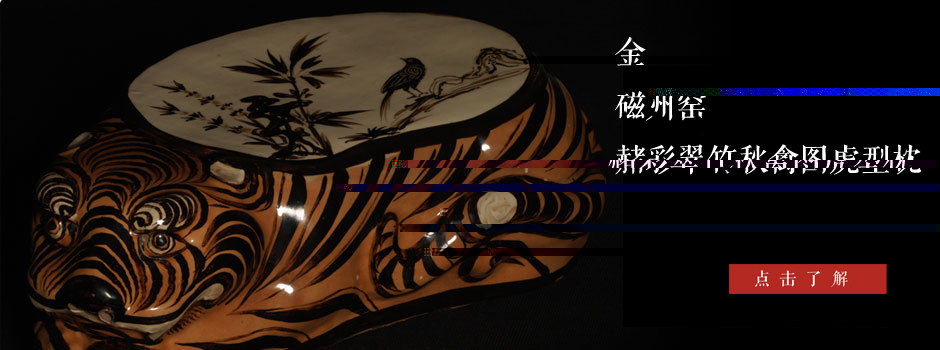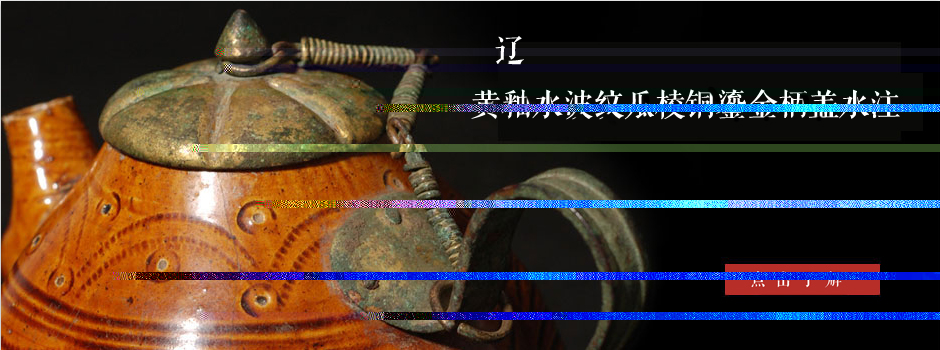- >> Company Profile
- >> President's Speech
- >> Brand Service
- >> Mission & Goals
- >> Value System
- >> Brand Construction
- >> Philosophy and Mode
Address: Room 614-616,China World Office 1, No.1 Jian Guo Men Wai Avenue, Beijing, P.R.C.
Tel:+86-10-65051177
Fax:+86-10-65058988
E-mail:soongs@zbkenuo.com
Home >> Show Items
Green glazed pillow with incised pattern produced by the Cizhou Kiln in the Jin Dynasty
 |
 |
 |
The pillow has a fat bottom and slightly hollow surface. Its wall is gradually larger from the top to the bottom, at which there are the Chinese characters “HaoZhen”.
The pillow shares the similar shape with the green glazed pillow incised with peony patterns of Zhenglong Year 1 (1156) in Jin Dynasty. Thus, the pillow may be produced in the early Jin Dynasty.
The molding bed is brick red. Cover the bed with white color paste. Incise a circle of lotus petal patterns on the wall. In the center of the pillow, there is the figure if half-moon shape. The broken tresses and peony patterns are incised with the half-moon shape. The petals of the peony are decorated by the comb patterns. After the incising, paste the background with black color. Then cover them with green glaze before burning. The craftsmen were careful in processing the pillow even though the procedures were complex. The broken tresses and peony patterns give us a sense of third dimension under the black background, which reflects their elegance and beauty.
Peony is the traditional famous flower in China. It represents the wealth, luckiness, prosperity and flourishing, which indicates the features of China as a big country. In ancient times, the peony was called herbaceous peony. After entering Tang Dynasty, the word “peony” was used widely. In the middle of Kaiyuan period, peony was popular in Chang’an. When it came to Song Dynasty, Luoyang City was famous for the peony. Other flowers had their original names while peony doesn’t. Thus, peony was regarded as the king of the flowers. “Luoyang is an ideal place for planting flowers. The peony there is the most wonderful flower in the world”. The peony in Luoyang was planted in Heluo region, which started in Sui Dynasty, flourished in Tang Dynasty and rank first in Song Dynasty. According to the historical records, when Emperor Sui Yang constructed the “West Garden”, he order his subjects to bring the rare stone and flower. Yizhou offered 20 boxes of peony as tribute. The peony was planted in West Garden. Since that, peony becomes part of imperial garden. In Tang Dynasty, there were many poems about peony. For example, “Only the peony is the national flower. The blooming peony flowers always attracted people across the country” written by Liu Yuxi. In Song Dynasty, apart from the poems, there were monographs for the peony, for example, “Record of Peony in Luoyang” written by Ou Yangxiu. Peony was deeply loved by people across the country. It became an important part of the folk-custom life. The peony patterns on the pillow further indicates the peony was popular at that time.
In Song and Jin Dynasty, the secular culture became the main trend of the social culture, which reflected in the porcelain making industries. The pillow with peony pattern was a good example. The remains of the pillow with green decoration on the black surface, which are unearthed in Guantai Kiln of Ci County, Hebei Province (Picture 2 and 3) are incised with the peony patterns. However, the remains of this pillow are not found. In recent years, similar remains of green glazed porcelain pillow with peony patterns on the black surface are found in the mine mountain of Jiaozuo, Henan Province, for which there is no official report. The black glaze and incised patterns were widely used to decorate the porcelain in northern part of Henan and Cizhou Kiln in the southern part of Hebei.

Picture 1 Green glazed pillow with incised peony pattern in the Zhenglong Year 1 (1156) of Jin Dynasty The design with words written with ink
The collection of Tokyo National Museum (donated by Mr. Yokogawa)

Picture 2 Jin Dynasty Unearthed at Guantai Kiln of Ci County, Hebei
The collection in Ci County Historic Relics Administration

Picture 3 Jin Dynasty Unearthed at Guantai Kiln of Ci County, Hebei
The collection in Handan Museum




